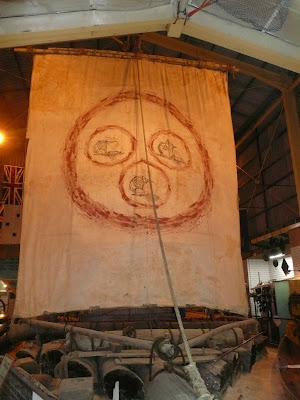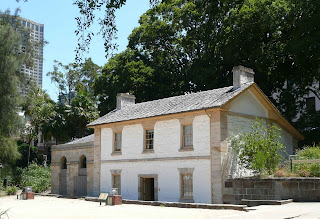
samedi 29 janvier 2011
27 janvier - Une journee dans le centre de Sydney. A day in the centre of Sydney

vendredi 28 janvier 2011
Diner au resto ‘Longrain’ 24 janvier – Dinner at ‘Longrain’ restaurant
mercredi 26 janvier 2011
Le Havre de Sydney. Sydney Harbour
La plage à Freshwater. Freshwater beach
Et l'après-midi. And afternoon
21 janvier Une journée à Mittagong: A day in Mittagong
lundi 17 janvier 2011
17 janvier - retour à Sydney. 17 January, back to Sydney
samedi 15 janvier 2011
14 janvier - une promenade à Alstonville. 14 January : a walk in Alstonvile
The last few days at Alstonville we had better weather, and discovered interesting parks and pathways in this modern subdivision. Also some interesting letterboxes.
 | |||
| Buddha Harry et le banyan (?) Buddha Harry and the banyan (?). |
mardi 11 janvier 2011
Encore des inondations - still more floods
A Brisbane, ils attendent aussi des inondations – le barrage qui donne de l’eau à la ville est normalement à 60% de capacité – aujourd’hui à 150%, donc il faut ouvrir le barrage, ce qui ajoute encore de l’eau. Et avec la marrée haute qui arrive…
On est un peu au sud, à Alstonville, près de Ballina ici, au bas de la carte. Ici il parlent des rivières qui vont déborder, mais pas du tout comme au Queensland. Mais il y a des routes fermees - normalement on part dimanche matin. Qui sait?
Toowoomba: Photo du Journal de Brisbane: Brisbane newspaper photo of Toowoomba
 Weeks of rain here have covered an area the size of France and Germany combined with water. A few days ago someone in Rockhampton, one of the worst affected areas, said that the amount of water passing by each day was the equivalent of twice the amount in Sydney Harbour. Don’t know how much that is, but obviously a lot.
Weeks of rain here have covered an area the size of France and Germany combined with water. A few days ago someone in Rockhampton, one of the worst affected areas, said that the amount of water passing by each day was the equivalent of twice the amount in Sydney Harbour. Don’t know how much that is, but obviously a lot. And then yesterday what they call an ‘interior tsunami’ hit Toowoomba, with a wall of water 2 metres high – now 8 confirmed dead, and at least 45 missing.
In Brisbane they are awaiting floods, and the dam that provides drinking water for the city has gone from ‘normal’ level of 60% capacity, to 150%. And high tide is this afternoon…
We are somewhat south of all this, at Alstonville, near Ballina here, where we are getting tired of watching the rain fall, but so far we are fine. There are predictions of rivers overflowing, but nothing like in Queensland. But roads are closed, and we are hoping that we will be able to leave on Sunday.
dimanche 9 janvier 2011
Ballina - La grande crevette. The Big Prawn.
Dimanche 9 janvier - une journee à Ballina. A day in Ballina January 9
After several days of rain, we decided to get out, and visit more of Ballina, the town near us. Ballina is situated at the mouth of the Richmond River –not yet flooded, but obviously lots of water. But most of the time we were dry.

First, to the Maritime Museum, to see the balsa wood raft made from the remains of 3 rafts from the expedition ‘Las Balsas. This proved that it was possible to sail from Ecuador to Australia on a raft – the trip was twice as long as that of the Kon Tiki. http://en.wikipedia.org/wiki/Las_Balsas

 La cabine pour 4 hommes. Cabin for 4 men.
La cabine pour 4 hommes. Cabin for 4 men.
La voile dessinée par Salvador Dali. The sail, designed by Salvador Dali.






































